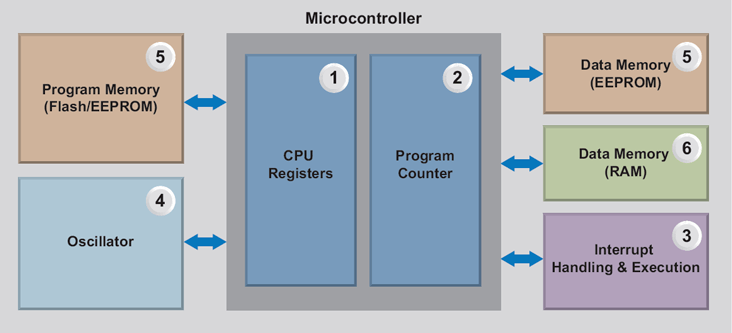Home Appliance Class B Safety Software Library
Modern home appliances have made once tedious tasks simple to accomplish. What once took hours of exertion can now be accomplished with a few presses of a button. Modern appliances are in large part electronically controlled. Electronic controls enable higher efficiencies, additional functionality and an improved user experience. But what happens if something goes wrong? Safety specifications, such as IEC 60335, are used to ensure manufactures have designed their products to operate safely. IEC 60335 defines safety standards at a system level. IEC 60730, which is referenced by IEC 60335, addresses safety of electronic controls in appliances. Currently IEC 60730 is mandatory for appliances sold in Europe and widespread adoption is likely. IEC 60730 Annex H defines safety requirements for electronic controls and acceptable measures to address faults/errors are defined in Table H.1 (H.11.12.7 in edition 3).
We have developed a library of low-level software routines and hardware peripherals that simplify meeting IEC 60730 requirements for class B safety. Each product family (AVR®, PIC16, PIC18, PIC24 and PIC32 microcontrollers and dsPIC® Digital Signal Controllers) has functions specifically designed to work efficiently with the available resources. Application Note AN1229 describes the Application Programming Interface (API) functions that are available in the Class B Safety Software Library and how to incorporate them in your project.
Our Arm® Cortex® M0+ based devices are supported by the free Hitex Class B Library. Download is available from the Hitex site at the following link: Microchip Hitex ARM Class-B Library. The VDE test report available for the library is found below.
There are several advantages to using the Class B Safety Software Library. First, it reduces development time. Each function has been optimized and thoroughly tested based on each architecture and available resources. Second, it reduces the time and cost required to certify the end appliance. By providing a test certificate to the testing agency, the requirements covered by the Class B Safety Software Library do not have to be retested. Finally, our application engineers can provide guidance on how to implement software safety efficiently.
For more information, please email class-b@microchip.com.
Key Features
Components Covered by the Class B Safety Software Library

Class B Libraries
- Active Libraries
- Archived Libraries
- Related Documents
Notes
- The IEC 60730 Class B library for Microchip’s Arm® Cortex®-M0+-based devices is supported by Hitex, and the library is also available from the Hitex website.
Note
- The VDE test report is included in the zip file with the Class B library